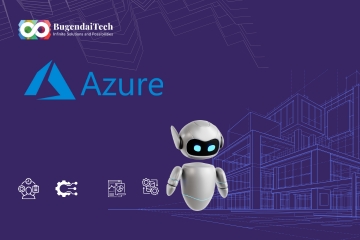The Role of Edge Computing in SDX: Navigating Regulatory Challenges
In the ever-evolving landscape of technology, Software-Defined Everything (SDX) is making waves as a transformative approach. SDX encompasses various aspects of IT infrastructure, from Software-Defined Networking (SDN) and Software-Defined Storage (SDS) to Software-Defined Data Centers (SDDC) and Software-Defined Security (SDSec).
One of the key enablers of SDX is edge computing. This paradigm brings computing resources closer to where data is generated. Understanding the regulatory implications becomes crucial as organizations increasingly adopt SDX and edge computing.
This blog delves into the role of edge computing in SDX and explores the associated regulatory challenges.

The Rise of SDX and Edge Computing
SDX represents shifting from a traditional, hardware-centric IT infrastructure to a software-centric model. This transformation is driven by the need for greater flexibility, scalability, and efficiency. SDX allows organizations to manage and optimize their infrastructure through software, enabling faster service deployment and better resource utilization.
Edge computing, on the other hand, addresses the limitations of centralized cloud computing by processing data closer to the source. This reduces latency, enhances real-time decision-making, and improves the overall user experience.
Edge computing is particularly valuable for applications requiring low latency, such as autonomous vehicles, IoT devices, and augmented reality.
The Symbiotic Relationship Between SDX and Edge Computing
Edge computing and SDX complement each other in several ways:
1. Flexibility and Scalability
SDX provides flexibility to manage edge resources dynamically. Organizations can scale their edge infrastructure based on demand, ensuring optimal performance without over-provisioning resources.
2. Efficient Resource Management
SDX enables centralized control and automation of edge devices, leading to efficient resource allocation. This is crucial for managing the distributed nature of edge computing environments.
3. Enhanced Security
Edge computing can pose security challenges due to the devices' distributed nature. SDX, particularly SD-Security (SDSec), offers robust security measures that can be applied across the edge infrastructure, ensuring data integrity and protection.
Regulatory Implications of Edge Computing in SDX
As organizations deploy edge computing within their SDX frameworks, they must navigate a complex regulatory landscape. Vital regulatory considerations include data privacy, security, and compliance with industry-specific standards.
1. Data Privacy and Sovereignty
Edge computing often involves processing sensitive data at or near the source, which can raise data privacy concerns. Tight data protection measures are required by regulations like the California Consumer Privacy Act (CCPA) in the US and the General Data Protection Regulation (GDPR) in Europe.
Organizations must ensure that data processed at the edge complies with these regulations, including obtaining user consent and implementing robust data protection mechanisms.
Data sovereignty is another critical aspect. Different countries have varying laws regarding data storage and processing. Edge computing can help address data sovereignty issues by keeping data within the country of origin.
However, organizations must still ensure compliance with local regulations.
2. Security and Risk Management
The distributed nature of edge computing expands the attack surface, making security a top priority. Regulatory frameworks like the NIST Cybersecurity Framework provide guidelines for securing edge infrastructure. To secure edge devices and data, organizations need to put strong security measures in place, such as encryption, access controls, and ongoing monitoring.
Compliance with industry-specific standards is also essential. For example, The United States' Health Insurance Portability and Accountability Act (HIPAA), which requires the protection of patient data, must be followed by the healthcare industry.
Similarly, Regulations like the Payment Card Industry Data Security Standard (PCI DSS) must be followed by the financial sector.
3. Compliance and Auditing
Regulatory compliance is a continuous process rather than a one-time effort. Organizations must establish continuous compliance monitoring and auditing mechanisms for their edge infrastructure. This includes regular vulnerability assessments, security audits, and compliance reporting.
SDX can facilitate compliance by automating policy enforcement and providing centralized visibility into edge operations. This guarantees that legal requirements are regularly fulfilled and that any deviations are quickly resolved.
Best Practices for Navigating Regulatory Challenges
To effectively manage the regulatory implications of edge computing in SDX, organizations should consider the following best practices:
1. Develop a Comprehensive Compliance Strategy
Create a compliance strategy encompassing all relevant regulations and industry standards. This strategy should include data privacy, security, and continuous monitoring measures.
2. Implement Robust Security Measures
Secure edge devices and data with strong encryption, access controls, and regular security updates. Leverage SDX capabilities to automate security policy enforcement.
3. Ensure Data Transparency and Control
Maintain transparency in data processing activities and provide users with control over their data. Implement mechanisms for obtaining user consent and managing data access.
4. Stay Informed About Regulatory Changes
Regulatory landscapes are constantly evolving. Stay informed about changes in regulations and adjust compliance strategies accordingly. Consult with legal and regulatory specialists to ensure continuous compliance.
5. Leverage SDX for Compliance Automation
Utilize SDX tools to automate compliance monitoring and reporting. This reduces the burden on IT teams and ensures consistent adherence to regulatory requirements.
Conclusion
The integration of edge computing within the SDX framework offers significant benefits in terms of flexibility, scalability, and efficiency.
However, it also introduces regulatory challenges that organizations must address. By understanding the regulatory implications and implementing best practices, organizations can maximize the benefits of edge computing in SDX while ensuring data privacy, security, and industry standards are met.






Comments